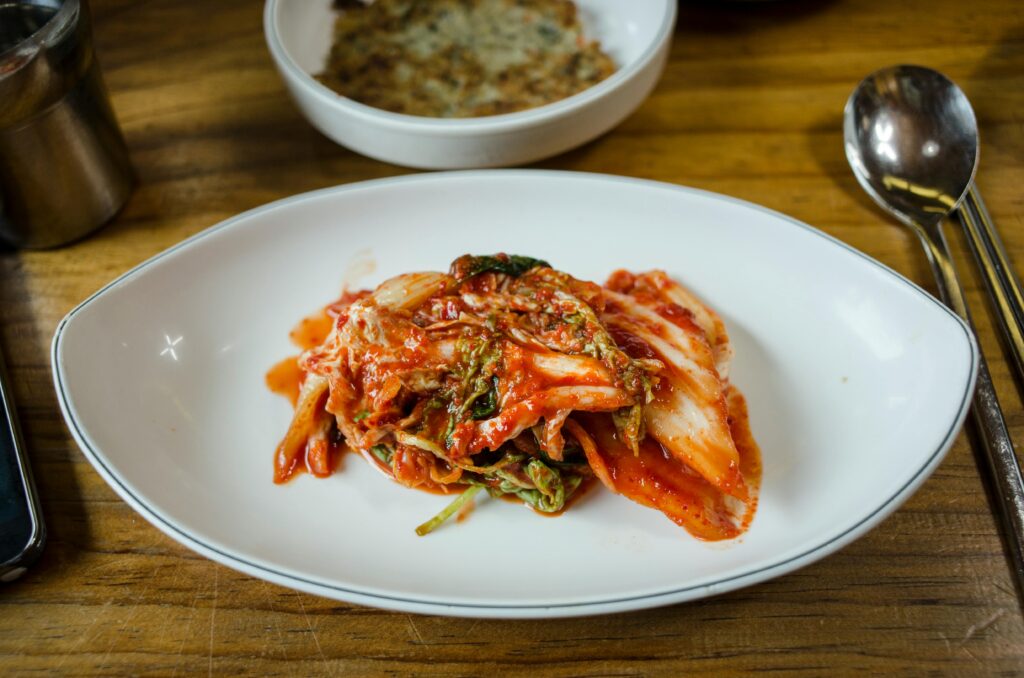
Kimchi, a staple in Korean cuisine, is a fermented side dish made with napa cabbage and various seasonings. Its tangy, spicy, and funky flavor profile makes it a beloved condiment enjoyed alongside meals or even as a snack. Here’s a breakdown of how to make your own kimchi at home:
Ingredients:
- Nappa cabbage (around 1-2 heads depending on size): Choose a firm, napa cabbage for best results.
- Kosher salt
- Korean radish (optional): Adds a different texture and flavor dimension to your kimchi.
- Korean chili flakes (gochugaru): The key ingredient for the spice and color.
- Garlic, ginger, and Korean pear (asian pear): These are finely chopped and form the base of the kimchi paste.
- Fish sauce and salted shrimp (saeujeot): Add savory depth and umami flavor.
- Scallions
Instructions:
- Prepare the Napa Cabbage: Cut the cabbage into quarters lengthwise and remove the tough core. Generously salt the cabbage quarters, ensuring all leaves get coated. Place the salted cabbage in a large bowl or container, submerged in water with a weight on top (like a plate with a heavy object). Let it brine for 6-12 hours, depending on your desired level of crispness. Rinse the cabbage thoroughly afterward to remove excess salt.
- Make the Kimchi Paste: While the cabbage brines, prepare the paste. Blend or finely chop the garlic, ginger, and Korean pear. In a separate bowl, mix these with gochugaru (Korean chili flakes), fish sauce, and chopped salted shrimp. You can adjust the amount of gochugaru depending on your spice preference.
- Assemble and Ferment: After rinsing the cabbage, apply the kimchi paste thoroughly between the leaves and massage it in. Wear gloves if working with strong chili flakes! Pack the coated cabbage tightly into an airtight container, leaving some space at the top for expansion during fermentation. Let it ferment at room temperature for 1-3 days, depending on how sour you like your kimchi. The fermentation process will create natural gases, so loosen the lid occasionally to release pressure.
- Refrigerate and Enjoy: Once the kimchi reaches your desired level of fermentation, store it in the refrigerator. Kimchi continues to mature and develop flavor over time, so it can be enjoyed for weeks or even months!
Tips:
- Use filtered or non-chlorinated water for brining, as chlorine can inhibit fermentation.
- Wear gloves when handling chili flakes to avoid burning your hands.
- The fermentation time can vary depending on the room temperature. Colder temperatures will slow down the process.
- You can add other ingredients to your kimchi for a personalized touch, such as carrots, daikon radish, or chopped apples.
- Kimchi is a versatile condiment. Enjoy it alongside rice dishes, noodle soups, or even add it to fried rice or omelets for a spicy kick!
